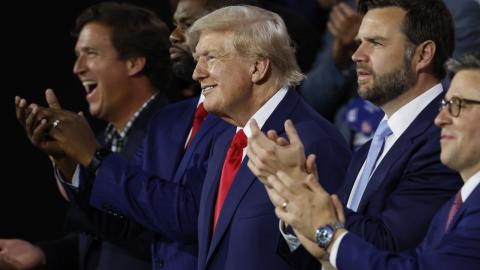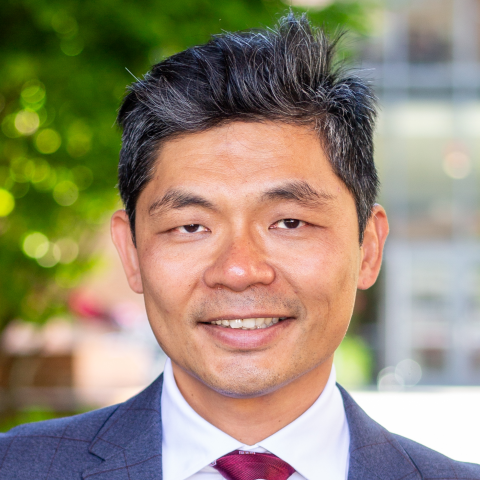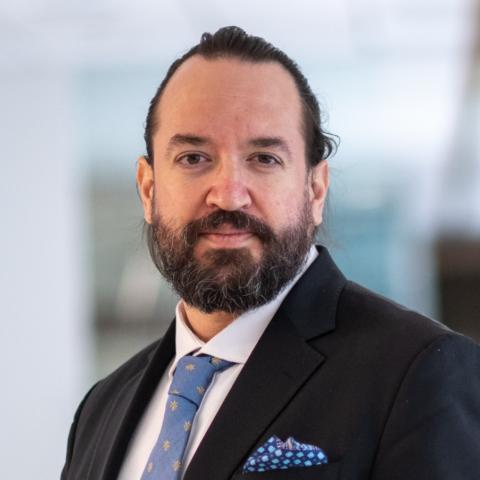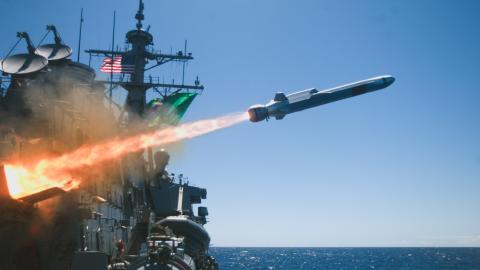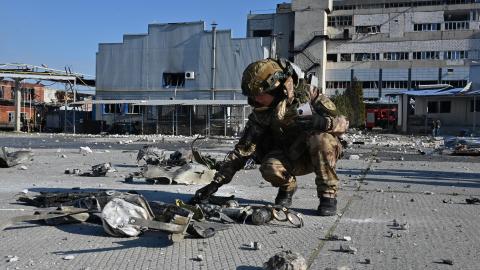As the war in Ukraine enters its fourth summer, there appears to be no end in sight despite US President Donald Trump’s repeated pledges to broker a negotiated settlement.
This is not for lack of trying. Since returning to the Oval Office he has met Ukrainian President Volodomyr Zelensky once and held numerous phone calls with him. Meanwhile Trump’s top national security officials have met their Ukrainian counterparts in Jeddah to discuss a ceasefire. His top envoy, Steve Witkoff, has traveled to Russia at least twice in recent weeks and has emerged as Trump’s primary intermediary with the Kremlin.
The prospects for a firm, lasting peace remain slim, at least for now, but much of the real diplomacy is probably happening behind the scenes. The White House is almost certainly engaged in quiet talks with both Kyiv and Moscow, as well as key European capitals. Both sides want to end the war. Russia’s economy is struggling, and estimates suggest that about 800,000 Russian troops have been killed or wounded since the 2022 invasion. Ukraine, meanwhile, suffers nightly airstrikes targeting civilians and infrastructure. Two major ports remain closed, eastern cities are devastated, and millions of Ukrainians have fled.
Only Trump really knows what his plan is. But for any lasting peace to emerge, two key components must be present: a fair and just settlement for Ukraine, and credible long-term security guarantees that prevent renewed conflict.
To achieve a fair settlement, several priorities must be addressed. Most pressing for Ukraine is the need to prevent any formal international recognition of Russia’s sovereignty over territory it has seized since 2014. While Ukrainians may privately accept that they won’t recover Crimea or parts of eastern Ukraine militarily any time soon, they are united in insisting that no recognition be granted to Russia. A precedent already exists: Iran has had de facto control of the Greater Tunb, Lesser Tunb, and Abu Musa islands in the Gulf, but they are still internationally recognized as part of the UAE.
Another critical issue is the exchange of prisoners of war and the release of political prisoners and abducted Ukrainian children. Thousands of prisoners remain on both sides, and exchanging them should be a politically feasible and mutually beneficial step. But the return of the estimated 19,000 Ukrainian children forcibly taken to Russia is a humanitarian imperative that cannot be ignored in any serious peace effort.
Additionally, Ukraine will require significant international support for reconstruction. After more than three years of full-scale warfare, infrastructure across the south and east of the country has been shattered. Transport systems, energy grids, and housing have all been badly damaged. Rebuilding these areas will be a monumental task. While Trump will expect European nations to take the lead on funding reconstruction, failure to address this issue could result in long-term instability in Ukraine.
Security guarantees will also be essential to ensure the durability of any agreement. NATO membership remains the most direct path to safeguarding Ukraine, but for now that path is closed. Trump has publicly opposed it, and several European allies share that view privately. But preventing a future war is in everyone's interest, so new forms of security cooperation must be explored.
One important step would be the deployment of a credible international monitoring mission along the current line of contact. This could be either civilian or military, but it must be composed of actors trusted by both sides. One creative solution would be to involve the GCC’s Peninsula Shield Force. Though unconventional, this would raise the Gulf states’ global profile and offer a neutral peacekeeping presence trusted by both Moscow and Kyiv.
Beyond monitoring, Ukraine will need a credible deterrence force to guard against future aggression. A coalition of the willing, comprising Ukraine’s partners, should consider deploying troops inside Ukraine. These would not be combat forces, but their presence would serve as a vital deterrent. Ukrainians are unlikely to feel secure unless British, French, Turkish, and other European forces are physically present, even if not under the NATO flag.
The US must also play a role in Ukraine’s future security, even if indirect. While Trump has ruled out deploying American troops, the US can still provide critical support. This includes continued weapons transfers, assistance in rebuilding Ukraine’s defense industry, and vital enablers for European forces such as intelligence sharing, logistics, and air-to-air refueling for jet patrols.
Whatever the outcome of these talks, Ukraine’s sovereignty must remain intact. The country must retain the right to hold its own elections, choose its own allies, and decide which international institutions to join. Allowing Moscow any say over Ukraine’s internal political direction would set a dangerous precedent. The same is true of how the international community recognizes the Russian controlled regions of Ukraine. In the 21st century, one country should not get away with using military force to annex a part of its neighbor. In fact, the last time this happened was 1990 when Saddam Hussein invaded and annexed Kuwait.
Trump’s efforts to end the war deserve serious consideration. If successful, a peace agreement would be a major foreign policy achievement. But it must be a peace that upholds Ukraine’s independence and lays the foundation for long-term stability. Even countries far from the battlefield, such as those in the Gulf, can have important roles to play in supporting diplomacy, reconstruction, and postwar security.
Now is the time for bold, creative thinking. If the war in Ukraine is to end, it must end in a way that is just, secure, and lasting — for both the Ukrainian people and the international order they are fighting to defend.



